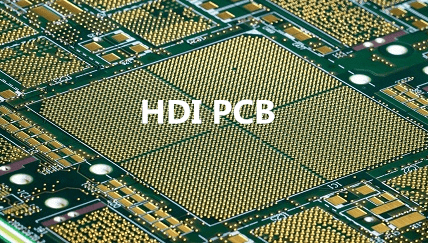High-Density Interconnect Printed Circuit Boards (HDI PCBs) have gained significant popularity in recent years due to their ability to accommodate complex electronic designs in compact form factors. These PCBs are characterized by their high-density interconnections, multiple layers, and fine-pitch components. However, with increased complexity comes a higher risk of reliability issues. This article will delve into the methods and considerations for assessing the reliability of HDI PCBs.

1.Design and Layout: Reliability begins with the design and layout of HDI PCBs. Properly designed traces, pad sizes, and clearances are essential to prevent electrical shorts and signal integrity issues. Advanced design software and simulation tools can be employed to optimize the layout and predict potential problems.
2.Material Selection: Selecting appropriate materials for HDI PCBs is crucial. Materials should offer good thermal conductivity, low dielectric constant, and excellent electrical properties. Ensuring that the chosen materials are compatible with the assembly processes is equally important to prevent delamination or warping during manufacturing.
3.Manufacturing Processes: Manufacturing processes play a pivotal role in HDI PCB reliability. The use of advanced techniques like laser drilling, sequential lamination, and controlled impedance matching demands strict process controls. Adhering to industry standards such as IPC-A-600 and IPC-6012 ensures consistency and reliability.
4.Thermal Management: HDI PCBs often house power-hungry components that generate substantial heat. Proper thermal management through techniques like heat sinks, vias, and copper planes helps dissipate heat and prevents overheating, which can lead to component failures.
5.Testing and Inspection: Comprehensive testing and inspection are critical steps in assessing reliability. This includes electrical testing to ensure proper functionality and the absence of shorts or opens. Automated optical inspection (AOI) and X-ray inspection can identify defects in solder joints, trace routing, and component placement.
6.Environmental Testing: Environmental tests simulate real-world conditions to assess PCB reliability. Common environmental tests include thermal cycling, humidity testing, and vibration testing. These tests help identify weaknesses and potential failure modes under various stress conditions.
7.Reliability Modeling and Analysis: Reliability modeling and analysis involve predicting the lifespan of HDI PCBs. Techniques such as finite element analysis (FEA) and accelerated life testing (ALT) can estimate the expected reliability and identify weak points for design improvements.
8.Failure Analysis: In the event of a failure, conducting thorough failure analysis is essential to pinpoint the root cause. Techniques like microscopy, spectroscopy, and destructive testing can help identify the failure mechanism, allowing for corrective actions.
9.Continuous Improvement: Assessing the reliability of HDI PCBs is an ongoing process. Continuous improvement efforts based on feedback from failures and testing data should be implemented to enhance the reliability of future designs.
Conclusion:
Reliability assessment of HDI PCBs is a multifaceted process that encompasses design, materials, manufacturing, testing, and analysis. By following best practices and industry standards, engineers and designers can minimize the risk of reliability issues and ensure that HDI PCBs meet the stringent demands of modern electronics applications. Continuous improvement and vigilance are key to staying ahead in the rapidly evolving field of PCB technology.